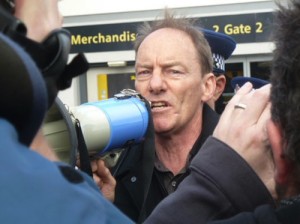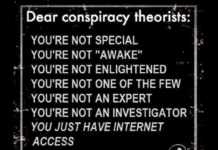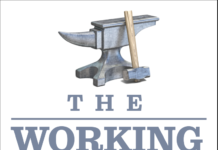 Last week I was endorsed as the Mana Movement candidate for the Auckland mayoralty.
Last week I was endorsed as the Mana Movement candidate for the Auckland mayoralty.
I decided to accept the challenge because the same central government policies which are hitting low and middle-income families hard are being replicated in local body policies in the new Auckland City.
In national politics we have seen the tax burden shifted from businesses and the wealthy onto low and middle-income families through the likes of tax cuts for the rich and GST hitting the poor the hardest. At the same time in local body politics we’ve seen the introduction of general council charges, user pays for water, a flat rate for wastewater and a much smaller share of council income from rates based on property values. The result is that the financial burden for the operation of Auckland City has shifted from businesses and the wealthy to those on the low-incomes. No wonder most Auckland families are struggling to get ahead.
Mana will be promoting policies to tackle the burden on low-income families while providing innovative, distinctive solutions for the five big headaches facing Auckland on which this 2013 local body election will be fought.
Here’s the situation at present:
Traffic gridlock:
The council is moving inexorably towards congestion charges, a fuel tax, public-private partnerships, network charges and toll roads as ways to reduce gridlock. Each of these is essentially a “flat charge” which inevitably shifts a disproportionate share of the burden onto families on low incomes. The only significant point of difference the council has with the National/Act/ Maori Party government on traffic congestion is the council’s strong support for the inner city rail loop. This is fine as far as it goes but it’s not matched by policy which offers anything significant to Aucklanders living outside the inner city.
Affordable rental housing:
The council’s unitary plan for Auckland talks about the city going up rather than out and that makes sense. However the claim the plan will result in more affordable housing is unachievable as it stands because housing is largely determined by the supply of land from “land-banks” owned by property developers. There is nothing in the plan to suggest how this process can be managed by the Council rather than profit-hungry developers.
More worryingly the council joined up with the government last year for the “redevelopment” of Tamaki (Glen Innes, Point England and Panmure) The first stage of this development will see the number of state houses halved (156 to 78) and the land sold to private developers for seaside mansions for the rich. The low-income families will be moved into a ghetto of new high-rise buildings which will look like a typical European city slum in five years. So much for a council commitment to affordable housing.
Living wage:
The overall council attitude to workers is appalling. As the employer of the port workers the council refused to stand up and help them (with the notable exception of a small number of councilors) as they fought to retain reasonable hours of work for themselves and their families. The council has left them out to dry and the issue remains unresolved even now.
Who runs Auckland – Auckland or Wellington?
When it come to who runs Auckland it’s true there has been a decades-long tussle so nothing new here but does the council have what it takes to stand up to the heavy pressure from Wellington over the Unitary plan and the rail loop for example? The council is wavering and already close to half the councilors are siding with the government. It’s a worrying sign.
Rates and Council Charges:
The new Auckland City Council has continued the move to user pays and flat charges that has been a feature of the past twenty years of right-wing councils in the Auckland region.
Mana is working on the solutions to these five big problems which we will put to Auckland voters as a real choice. For details you’ll have to wait till Mana’s Minto for Mayor campaign is launched. Watch this space.





Good that you are standing up against the evil that emanates from central government and the opportunists that central government serves.
Unfortunately, there are no solutions at this late stage in the game. (Well, collapse of Industrial Civilisation is a kind of solution, I suppose.) The Orcs have had their way for far too long and unstoppable geo-physical and geo-chemical forces have been unleashed taking humanity straight towards NTE (the latest assessment says around 2030 for the Northern Hemisphere and bit later for the Southern Hemisphere.). And the banksters’ Ponzi scheme based on fractional reserve banking, interest charged money created out of thin air and phoney derivatives is starting to unravel.
Auckland is very much part of the problem because it produces almost noting except pollution and it sucks in everything it needs. Like all large cities it is totally unsustainable but has managed thus far on the back of cheap and readily available energy (which won’t be cheap and readily available for much longer. And the longer it is cheap and readily available, the sooner we reach NTE.)
I guess this comment will get plenty of thumbs down for pointing out reality in a society that is founded on numerous fantasies, such as infinite growth on a finite planet.
Your comments almost never merit a thumbs down from most people here. Which suggest the hard core Daily Bloggites are Woe is me doom mongers of the highest order. Hardly anyone will post against you either which I find curious considering how negative your tone is.
How many comments has he made?
A good number. Probably in the vicinity of close to two dozen posts. Why do you ask?
What’s your beef now?
No beef. Afewknowthetruth stated that he/she was worried about getting thumbs down on their post. I pointed out this was unlikely to happen.
Minto, you’re wrong about the City Rail Link (please do not call it the ‘inner city rail loop’ as it is not a loop). It benefits all Aucklanders as it unlocks the capacity of the entire rail network. Currently all lines have a capacity of 24 trains per hour, but the Britomart terminus limits this capacity because each train must reverse out. If it can come through the city centre and then out the other side to other parts of Auckland, then capacity is at least doubled, or possibly more.
The term “inner city rail loop” is one the media have been using and is not entirely correct. The rail link will be creating a “rail loop” in the city but the media labelling it as a loop, I can only assume, is to make it seem like it will be separate from the rest of the rail network and only for the benefit of people in the CBD. The Rail Link will not only lower travel time for commuters, it will also remove the various bottle necks allowing for more trains to run at peak time.
Well that’s enlightening thank you Louis & Hagen I was against it and now I’m not.
Good luck John. Auckland needs someone with principles that aren’t for sale.
Hi Louise – my point about the limitations of the Auckland City rail loop is that most people in Auckland don’t live close to a railway line so while I accept the benefits of the link as you put them it’s only a part of the solution rather than the panacea it is often portrayed as.
Hi John,
I have no doubt you’d make an excellent mayor but I think what you’ve wrote here is a very simplistic view of the transport situation in Auckland.
The City Rail Link won’t just benefit those who live near a rail line. Most cities with developed rapid transit networks don’t rely on everyone living within walking distance of a station, but on connecting services bringing passengers from outlying areas into these hubs. The council is planning to recast the current bus network along these lines once fully integrated ticketing across all modes is in place. The City Rail Link will facilitate this by allow trains to run up to every 5 minutes on all lines, meaning passengers don’t have to worry about timing their connection between bus and train (or busway on the North Shore).
In addition, projects like extending the Onehunga rail line to Favona, Mangere and Auckland Airport rely on extra capacity being created through the core of the network by the City Rail Link.
Good luck John. Even though youll be lucky to get bugger all votes.
Your best bet is to run for council, and try and make a difference there.
And are you going to buy back the buses and run them under public ownership.
[…] Read more John Minto’s blog posts @ The Daily Blog […]
Comments are closed.